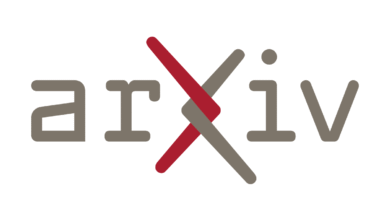Huawei agentic AI drives industrial automation

This exemplifies how Huawei is developing effective AI systems that go beyond simple command-and-response interactions towards platforms capable of autonomous planning, decision-making and execution.
Huawei’s approach to building these agent AI systems focuses on a comprehensive strategy that includes AI infrastructure, foundation models, specialized tools, and agent platforms.
Zhang Yuxin, CTO of Huawei Cloud, explained this framework at the recent Huawei Cloud AI Summit in Shanghai, where more than 1,000 leaders from politics, business and technology studied practical applications across finance, shipping ports, chemical manufacturing, healthcare and autonomous driving.
This distinction is important because traditional AI applications respond to user commands within static processes, while agent AI systems operate autonomously that fundamentally changes their role in an organization’s operations.
Zhang described this as a “major shift in applications and computing,” noting that these systems make decisions autonomously and adapt dynamically, reshaping how computing systems interact and allocate resources. The question for organizations becomes: How can you build the infrastructure and platforms capable of supporting this level of autonomy?
Infrastructure challenges drive new computing architectures
The computational requirements of agentic AI systems have exposed limitations in traditional cloud architectures, especially with increasing underlying model training and inference requirements.
Huawei Cloud’s response includes CloudMatrix384 supernodes connected through the high-speed MatrixLink network, creating what the company describes as a flexible hybrid computing system that combines general-purpose intelligent computing capabilities.
The architecture specifically addresses bottlenecks in Mix of Expert (MoE) models by inferring expert parallelism, which reduces NPU idle time during data transfers. According to the company’s technical specifications, this approach enhances the inference speed of a single PU 4-5 times compared to other popular models.
The system also includes a memory-focused AI-Native storage module designed for typical AI tasks, which aims to enhance training and inference efficiency. ModelBest, a company specializing in general-purpose AI and machine intelligence, demonstrated practical applications of this infrastructure.
Li Dahai, co-founder and CEO of ModelBest, detailed how the MiniCPM series — which includes basic modeling, multimedia capabilities, and full media integration — combines with the Huawei Cloud AI Compute Service to achieve 20% improvements in training energy efficiency and 10% performance gains compared to industry standards.
MiniCPM models have found applications in automotive systems, smartphones, embodied AI, and AI-enabled personal computers.
From basic models to industry-specific applications
The challenge of adapting basic models to meet specific industry needs has led to the development of more sophisticated training methodologies. Huawei Cloud’s approach includes three main components: a complete data pipeline processing suite through management, a ready-to-use incremental training workflow, and an intelligent evaluation platform with pre-defined evaluation sets.
The increased training workflow is said to boost model performance by 20-30% by automatically adjusting data and training settings based on key model features and industry-specific goals. The evaluation platform enables rapid setup of industry or company-standard systems, while meeting accuracy and speed requirements.
Real-world applications demonstrate the practical application of these methodologies. Shaanxi Cultural Industry investment Group has partnered with Huawei to integrate artificial intelligence with cultural tourism operations.
Huang Yong, president of Shaanxi Cultural Industry Investment Group, explained that using Huawei’s data and artificial intelligence convergence platform, the organization has integrated diverse cultural tourism data to create comprehensive datasets covering history, film and intangible heritage.
The partnership has created what they call a “trusted national data space for cultural tourism” on Huawei Cloud, enabling applications including asset verification, copyright transactions, enterprise credit enhancement, and creative development.
The collaboration produced the Boguan Cultural Tourism Model, which powers AI-based tools, including the Cultural Tourism Intelligent Brain, Intelligent Management Assistant, Intelligent Travel Assistant, and AI-based short video platform.
International applications show similar patterns. Dubai Municipality worked with Huawei Cloud to integrate core models, virtual humans, digital twins, and geographic information systems into urban systems. Maryam Al Muhairi, CEO of the Building Regulatory and Permitting Agency at Dubai Municipality, shared how this integration has improved city planning, facilities management and emergency responses.
Enterprise-level agent platforms are emerging
The distinction between consumer-focused AI agents and enterprise-level AI systems focuses on integration requirements and operational complexity. Enterprise systems must integrate seamlessly into broader workflows, handle complex situations, and meet higher operational standards than consumer applications designed for rapid interactions.
Huawei Cloud’s versatile platform addresses this gap by providing the infrastructure for companies to create agents tailored to their production needs. The platform combines AI computing, models, data platforms, tools and ecosystem capabilities to simplify agent development through the deployment, release, use and management phases.
Conch Group’s application in cement manufacturing provides specific performance metrics. The company has partnered with Huawei to create what it describes as the cement industry’s first AI-powered cement and building materials model.
The resulting cement parameters predict clinker strength at 3 and 28 days with predictions deviating less than 1 MPa from actual results, representing over 90% accuracy. To optimize the cement calcination process, the model proposes key process parameters and operational solutions that reduce standard coal use by 1% compared to Class A energy efficiency standards.
Xu Yu, assistant general manager of Conch Cement, noted that the model’s success in quality control, production optimization, equipment management and safety lays the foundation for comprehensive collaboration and decision-making by cement agents, moving the industry “from relying on traditional expertise to being completely data-driven across all operations.”
In the field of corporate travel management, Smartcom has developed a travel agent using Huawei Cloud Versatile that provides comprehensive intelligent services across departures, transfers and flights. The system combines travel industry data, company policies and individual trip histories to create recommendations, said Kong Xianghong, CTO of Shenzhen Smartcom and director of Smartcom Solutions.
Employees adopt more than half of these suggestions and complete reservations in less than two minutes. The agent solves 80% of problems in an average of three interactions by matching predictive questions.
What’s next for autonomous AI?
The applications discussed at the summit reflect a broader industry trend toward agentic AI systems that operate increasingly autonomously within defined parameters. The evolution of technology from interactive tools to systems capable of autonomously planning and executing complex tasks represents a fundamental architectural shift in enterprise computing.
However, transformation requires significant investments in infrastructure, sophisticated data architecture, and tight integration with existing business processes. Performance metrics from early implementations—whether in manufacturing efficiency gains, urban management improvements, or improved travel reservations—provide benchmarks for organizations evaluating similar deployments.
As AI systems continue to mature, the focus appears to be shifting from technological capability offerings to the challenges of operational integration, governance frameworks, and measurable business outcomes. Examples from the cement industry, cultural tourism, and corporate travel management suggest that practical value emerges when these systems address specific operational pain points rather than acting as general-purpose automation tools.
(Photo by Amnesty International News)
SEE ALSO: Huawei details open source AI development roadmap at Huawei Connect 2025
Want to learn more about AI and Big Data from industry leaders? Check out the Artificial Intelligence and Big Data Expo taking place in Amsterdam, California and London. This comprehensive event is part of TechEx and is co-located with other leading technology events, click here for more information.
AI News is powered by TechForge Media. Explore other upcoming enterprise technology events and webinars here.
Don’t miss more hot News like this! Click here to discover the latest in AI news!
2025-10-14 12:00:00




